
CPU coolers compared!
Review date: 26 May 2001.Last modified 03-Dec-2011.
If you've got a modern CPU, you need a CPU cooler.
Gone are the days when PC CPUs could get away with just a little aluminium heat sink stuck on top of them, or no cooler at all. When any Intel or AMD CPU on the shelves today is going full blast, it's pumping out heat - less than 20 watts for current Celerons, less than 30 for current P-IIIs, something around the 40 watt mark for current Durons, and better than 70 watts for top-of-the-line Athlons.
You need a pretty big heat sink, with a fan on it, to shift that energy away.
The faster a given CPU runs, and the higher its supply voltage, the more heat it emits. If the cooling thingy attached to the top of the chip can't dissipate that heat well enough, the CPU will get too hot and stop working.
Note that "stop working" does not imply "and will never work again". Pretty much any cooler will stop a CPU from heating up so fast, and so far, that it's destroyed. If you run a current model CPU with no cooler at all, you can blow it up; Athlons and Durons can die in seconds, and often do when someone's failed to notice that their cooler isn't clipped on right and thus doesn't actually touch the CPU.
But if you're just using an inadequate cooler, as opposed to none at all, your computer will merely be flaky. You'll be able to cure the problem by improving your case ventilation and/or upgrading to a better cooler.
But which to choose?
Even if you're running a CPU at stock speed, the cooler you pick can affect your system stability, especially if you're using the hotter AMD chips. If you're an overclocker, high powered cooling is essential.
Just because a cooler looks, well, cool, doesn't mean it's good. Just because it's expensive doesn't mean it's good.
And even if a cooler is efficient at the basic task of shifting thermal energy from a CPU package to the air, that doesn't mean you'll like it. If the thing's got some bizarre attachment system that drives you bananas when you're trying to put it on your processor - or, worse, if it smashes your processor because it clamps down too hard - then I think it's safe to say that it's not a good buy.
So, in the name of consumer information, I got a pile of CPU coolers, and I annoyed the heck out of myself for some days testing them.
Don't trust your motherboard!
If you're monitoring your CPU temperature with some sort of software utility that reads a motherboard sensor, beware. It's better than using a sensor stuck to a heat sink, but it isn't necessarily a lot better.
Socket A motherboards that can monitor CPU temperature usually have a probe behind the CPU itself, in the middle of the socket. If the probe's touching the back of the chip package, it'll pretty much tell you how hot the chip package is.
Unfortunately, the hardware that reads the probe output may or may not be reliable. People's hardware-monitor temperature readings sometimes change drastically when they update the BIOS version of their computer. The temperature, of course, has stayed the same; it's the calibration of the monitoring hardware that's changed.
And many behind-the-chip probes don't quite touch the CPU.
And probe readings are susceptible to changes in ambient temperature that soak through the motherboard.
A better way yet to monitor CPU temperature is with a thermal sensor inside the chip package itself. All current Intel CPUs have a thermal sensor, which better motherboards can read; the new breed of AMD "Athlon 4" processors apparently have an internal sensor as well.
Internal sensors aren't right smack dab in the middle of the CPU core, but they nonetheless give you a quite good idea of the chip temperature. They're still at the mercy of the monitoring hardware calibration, though.
How I tested
CPUs don't pump out their maximum heat all of the time. If you load them up with benchmark software - or a program that just pointlessly flogs the CPU like crazy for the express purpose of making it hot - then they'll emit a fairly constant heat. But using a CPU as a heater - and all you need to test a CPU cooler is a heater - is like using a vintage Jaeger-LeCoultre to prop up the short leg of a table.
Yes, a 50 jewel chronometer adjusted to eight positions that happens to be as thick as your table leg is short will pretty much do the job. But a much, much simpler thing, like a bit of wood, will work better.
So it is with testing CPUs. If you use a heater that's shaped like a CPU, instead of an actual CPU, you can get more accurate numbers. With a dedicated heater, you know exactly how much heat the thing's really producing.
Here's my heater - a 4.7 ohm wirewound resistor screwed and thermal-epoxied to an aluminium plate, with a thermal probe inside it. I took this picture when I was using the heater to test water cooling gear (see that piece here); it had ordinary white thermal transfer compound ("heatsink grease") between the resistor and the plate then, but now it's held together with Arctic Silver thermal epoxy.
When I rebuilt the heater with the epoxy, the thermal probe ended up a bit closer to the resistor element, and so it now registers higher temperatures. The results are just as repeatable as they were before, but this heater's heat readings tend to be a bit mean to the coolers. Mind you, that might make its emulation of CPU core temperatures more accurate, for all I know.
The top of my heater's just a flat slab. Real CPUs aren't like that. They have a raised contact patch in the middle, through which all of the heat has to be transferred. For current Intel Socket 370 and AMD Socket A CPUs, the contact patch is down around one square centimetre in size.
That's why many better coolers these days have at least a copper insert in the base, to more effectively spread the heat from that small patch to the cooler's fins.
To simulate the smaller contact patch of a real CPU, I used a little rectangle of copper.
I cut it from this shim, which is meant for use on Socket A CPUs when you're using them with some kind of high-clamp-force cooler that might smush the core if you don't support it elsewhere. This shim had seen service on several chips and was now rather the worse for wear, so I cannibalised it.
I made the rectangle rather larger than a normal CPU contact patch, to compensate for the fact that there was another thermal junction between it and the heater, which would hurt the coolers' efficiency.
I could have thermal-epoxied the copper patch to the heater, but instead I just used thermal transfer compound; that way I can easily remove it again, or swap it for a patch of a different size. Plus, if I ham-fistedly gouge a trench in the patch with a screwdriver, I can just throw it away and make a new one.
I used a two-probe digital thermometer to keep tabs on the ambient air temperature and the temperature of the heater - one of the probes is thermal-epoxied into the heater, between the resistor element and the plate. If the ambient temperature rises X degrees, so will the temperature of the heater, all other things being equal; if you check the difference between ambient and the heater temperature (the "delta-T"), you stop ambient temperature variations from influencing your results.
In every case, if a cooler came with thermal compound pre-applied to the bottom - a patch of grease, or a square of "chewing gum" solid compound - I scraped it off and replaced it with a thin layer of Arctic Silver thermal grease. This silver-loaded grease isn't actually a great deal more effective than ordinary cheap white thermal goop, but it works a little better, and comes in a neat-o syringe. Australian buyers can get it, and the epoxy, from Aus PC Market. The grease is $AU19.80 delivered per three gram syringe; the epoxy is $34.10. If you're in Australia and want to order Arctic Silver products, click here!
The better "chewing gum" thermal compounds can actually be very good. They're not like the solid thermal pads on cheap heat sinks. But some of these compounds require heat curing before they work properly. Many users don't much feel like running their CPU with the cooler fan disconnected until the heat sink hits the elevated temperature needed to get the gum to do its thing properly; many other users have no idea that that's what they're supposed to do.
The gum compounds that don't need special curing can work fine if the cooler clip's strong enough to mash the gum out around the contact point and give you a nice thin layer, but grease works a little better. If you remove and replace the CPU cooler for any reason, you'll have to scrape gum compound off and replace it with grease anyway - it's a single-use product.
Faking a socket
A heater that looks like a CPU's no use unless you've got a socket to put it in, onto which you can clip the coolers you're testing. If you attach the coolers some other way, you take their clips out of the equation and your numbers drift further away from the real world.
Plus, it's quite difficult to attach a CPU cooler to a heater without using its clip.
So, one day, I spied an innocent, trusting Asus slotket adapter card...
...not unlike this one, playing by itself in a park. I lured it into my van with promises concerning enchanting little kittens.
Then I did this to it.
The hole accommodated the resistor on the bottom of the heater, and the temperature probe, power and voltage monitor wires going to it.
The hacked-up slotket worked pretty well, except for the fact that the heater's a little thicker than a real CPU. This made all of the clips tighter, and the ones that were already pretty darn tight became a real adventure.
Unsurprisingly, after testing 15 coolers, one of the socket's mounting hooks broke off.
Even without extra clip tension, you can't expect a normal CPU socket to survive dozens of coolers being clipped on and off, especially when some of them are overly tight at the best of times (more on which ones those are in a moment). A lot of the coolers' clips only engage the centre hook on each side of the socket, so all of the strain goes into one little bit of plastic. If nothing else, the sharp metal of the clip-end cutouts will wear away the hooks until they snap.
I could get around this problem by hacking up slotket after slotket, but they're not a renewable resource. To solve the problem permanently, I'd have to make my own socket-equivalent, out of steel or something.
So that's what I did.
Voila - two bits of square steel tubing Dremeled into analogues of socket-CPU clip hooks. There's a piece of thin plastic for thermal insulation; otherwise the heater would be enthusiastically heating up the steel rails, and the bench vise they're held in.
It was surprisingly easy to hog out some of the tubing and leave these hefty clip-pieces.
Thermal resistance
The performance of any cooling system can be expressed as a "thermal resistance", in degrees Centigrade per watt (°C/W). A thermal resistance of 1°C/W means that something's getting one degree warmer for every watt of heat it's dealing with. The lower the thermal resistance, the better.
If you measure thermal resistance by checking the temperature of any part of the cooler, you'll get inaccurate results. Even if your temperature probe's epoxied into a hole in the base of the heat sink - and it's usually just stuck to a fin - all you're reading is how hot the heat sink gets.
The lousier the thermal connection between the cooler and the CPU, the better a heat sink temperature reading will look - if you put a lump of wood between the cooler and the processor, the cooler will stay stone cold even as the CPU melts down.
My heater-based system with its probe inside the heater and the second probe for ambient temperature monitoring gets pretty good repeatable results. From repeating tests, and from fooling around with the contact patch placement and amount of thermal compound, I reckon my numbers are accurate to about five per cent either way. So if two coolers test as having thermal resistances of 0.6 and 0.65°C/W, respectively, the first one may actually be as low as 0.57 or as high as 0.63; the second one may be as low as 0.6175 or as high as 0.6825. The one that seems to have a higher thermal resistance may actually have a lower one; that's just not the way to bet. But coolers with a larger measured difference very likely are different by roughly the measured amount.
Their actual performance in a real computer will vary depending on the load they're subjected to, the case ventilation, how tight their clip is (springy things, including clips, "take a set" when they're bent, and lose some of their springiness), how much grease you use and what type it is, and so on. But these numbers still work for comparison purposes.
For reference, the lowest thermal resistance score I've ever been able to get out of my heater rig is is 0.27°C/W - about twice as good as the score from the best of the air coolers in this comparison. To get that score, though, I dangled the heater inside the reservoir of a water cooled system, so its whole outer surface was pulled down very close to ambient temperature. Its core temperature number was still 14°C above ambient, though, from 51 input watts!
Buying them
Unless otherwise noted, all of the Australian dollar ($AU) prices here are from Aus PC Market, and include delivery. Show up at Aus PC's Gladesville, NSW address to collect the gear and you can talk 'em down a buck or three.
On with the show!
The coolers
3A Cooler prototype
If you've ever felt the need for a CPU cooler made in Romania, then here's the heat sink for you. 3A Cooler is just starting up (their Web site wasn't up when I first wrote this review), but their first product is a quite impressive chunk of metal.
This heat sink, officially called the "Z-bra AlCu1", appears to owe something to Thermalright's recent offerings (like this one, for instance). It's got lots of thin fins emerging from a triangular-pyramid core, which gives every fin a pretty good heat path to the contact patch at the bottom. There's a stripe of copper fins that line up with the contact patch; the rest of the fins are aluminium. It's all held together with threaded rods, equipped with a solid yet easy to use three-hole two-part clip, and capped off with a firmly attached plastic shroud that accepts a standard 60mm fan.
The curved fin profile and copper stripe make this a pretty flashy cooler-base, and it ought to fit on every Socket 370/Socket A motherboard out there, too.
To determine the worthiness of an unknown heat sink, I like to stick a high powered fan on it and see if it gives
a good result. If it does, then it's worth testing it with more sensible fans.
Topped with a quite ferocious Delta AFB0612EH, which has a run power of five-odd
watts, the 3A Cooler sink did well; 0.54°C/W. Unusually, this heat sink is happier with its fan sucking air up through
it, rather than blowing air down onto it; with the fan turned around, the cooler clocked an even better 0.52°C/W.
I used the same fan orientation for the subsequent tests.
The AFB0612EH is on the borderline between "loud" and "too loud" if you ask me, so I tried a whisper-quiet Papst TYP 612 FL (Microplex's Silent Twin uses a pair of 612s).
You'd use one of these fans if you wanted to make a dead quiet living room PC, and the 3A sink managed 0.76°C/W with it. Which isn't good enough for high heat Athlons, but would be fine for a modest Socket 370 processor, and more than enough for a Via C3.
Next, I tried the two watt fan from a Thermaltake Volcano 5, which is a perfectly good example of a medium power 60mm unit that won't make more noise than most people will tolerate. With this, the 3A sink managed a highly creditable 0.55°C/W. Which is quite good enough for most overclockers, and not far short of what the sink scored with the much more annoying Delta fan.
3A Cooler are definitely on the right track with the Z-bra AlCu1. Assuming it hits the market with a reasonable price, this heat sink will be able to compete just fine with products from the established names.
Aerocool AB7080H
Aerocool sell a selection of funky-looking coolers, including a couple that seem to be the same as the Power Cooler branded units I check out here and here.
The AB7080H is a well made cooler with a thin-fin copper heat sink. There's a rather firmly sprung hinged-end one piece clip, and a medium-to-high-power 70mm fan sitting on an aluminium frame over the top. The bottom of the heat sink isn't quite flat - a ruler wobbles on it a little - but I've seen plenty worse. It wouldn't be difficult to lap it flatter.
For some reason, the decorative holes on the AB7080H's fan frame match up with slots and holes cut laterally through the heat sink fins, the purpose of which I'm not sure about. Maybe it improves air flow. It doesn't seem to be doing much harm, mind you, because the AB7080H scored a respectable 0.58°C/W. Which is more than acceptable for a cooler that doesn't make a horrendous racket.
I'm a bit concerned about any copper-sink cooler that only has a one-hole clip, but as long as you're not clipping and unclipping the thing all day, and don't knock your computer off the desk, your CPU socket ought to escape damage.
The AB7080H doesn't break any records, but it's a workmanlike cooler with solid performance.
Aerocool Glacier
Aerocool's Glacier is basically the same thing as the AB7080H (above), except it's got a wider fan frame with a show-off translucent 80mm fan on top of it. It's quieter than the AB7080H, and it doesn't perform as well - 0.64°C/W. That's good enough for any normally overclocked PC with reasonable case ventilation, but there are lots of other coolers that work just as well, and many of them don't need fancy copper heat sinks to do it.
The Glacier, like the Hercules (see below) comes in some pretty impressive packaging.
I'm not convinced that these boxes are entirely worth the effort expended to make them, but I've seen plenty of cardboard-boxed coolers that've been damaged in transit; that ought not to happen to the fancy-boxed Aerocool models. The funky boxes also make these coolers rather impressive gift items, if you're looking for something to give to The Geek Who Has Everything.
Aerocool Hercules
The Hercules is Aerocool's "dual fuel" cooler. It's got a simple screwdriver-attach one-piece spring-clip that lets you install it on Socket A systems, but the aluminium frame over the thin-fin solid copper heat sink also has running boards at the ends, which are there to accept Socket 478 mounting clips. The cooler's topped off by a medium power 70mm translucent fan, allowing you to see as much of the copper you paid for as possible.
You get two Socket 478 clips, and a four pin power adapter for the fan, in the Hercules's fancy see-through box.
The Hercules' heat sink has a near mirror finish base which is rather flatter than the bottom of their Glacier or AB7080H sinks, In Socket A mode, though, it only scored 0.62°C/W, which is good, but not particularly thrilling.
Then again, this is a well made copper-sink cooler with a nifty looking fan and a fancy gift box, and it doesn't make a lot of noise. I'm not sure what the point of the dual-mode design is - a new CPU cooler is hardly expensive compared with the other stuff you have to buy if you're switching from Socket A to Socket 478, or vice versa - but it does work. If you for some reason need a cooler compatible with both socket types, this is a perfectly good one.
I review the Hercules in Socket 478 mode here.
Aerocool X-Factor
Fancy enough for you?
Aerocool's X-Factor comes in two flavours; this is the more outrageous looking one. It's topped with a 70mm wide, 15mm high "aluminium" fan, which actually does have a solid aluminium frame. The fan impeller is only plastic, but it's got a shiny metallised finish that'll pass for aluminium when the thing's spinning.
The fan looks impressive, but it's not a terribly powerful unit; the shiny-fanned X-Factor is a medium-noise cooler, perfectly suitable for any ordinary PC.
The X-Factor heat sink has a copper core in the middle of a hefty solid aluminium cross - hence the name - from which the diagonal fins extend. There's a slot cut most of the way to the core on two sides of the heat sink, though, to accomodate the spring wires for the rather tight three-hole end-hinged clip. The clip works fine, but its very presence means that this roughly 52mm high cooler has less than 23mm of fin height on two sides. The fins aren't terribly thin, either, so their aggregate surface area isn't enormous; this cooler relies on having a good heat path to what fins it's got.
It works OK; it scored 0.62°C/W. That's quite good for a cooler that doesn't make a nasty racket, but it's nothing special. You'd expect something this odd-looking to perform a bit better.
Fortunately for the loony overclocking crowd, Aerocool also sell the X-Factor with a loud-and-nasty 6.6 watt Y.S. Tech 70mm fan on it. That fan's a 25mm tall unit moulded in basic black, not a shiny metal show pony, but it pushes the X-Factor's performance up to 0.56°C/W. That's not amazing, but it's very good; it's only slightly behind the best air coolers you can get.
The price you pay for this, of course, is that the 6.6 watt fan makes a lot of noise. And it doesn't look nearly as sexy as the aluminium one. But if you want a serious overclocking cooler that's still not terribly tall - with the taller fan, the X-Factor's still only 62mm from its base to the top of the fan, not counting the heads of the fan mounting screws - then the top-spec X-Factor fits the bill.
Alpha PAL6035
Alpha used to be pretty much the kings of PC CPU cooling. Their "microforged" heat sinks had thinner pins than anybody else could manage, and their interesting shrouded-sink designs make sure all of every pin gets air flow. But now there are quite a few other high-performance heat sinks, and the two chunky socket-CPU Alphas I've had kicking around here for some time now don't look tremendously exciting.
That's because both of these coolers use 4500RPM 60mm fans, not the 6800RPM+ units that the best current coolers have. You can stick a 6800RPM fan on an Alpha, no problem, but you'll pay for the privilege.
Below Zero has Alpha coolers here in Australia; they sell the PAL6035 with a choice of fans from $AU61 to $AU63.
An Alpha cooler comes as a box of bits that you have to assemble; it's not a difficult procedure, but it's unusual.
Once you've done the assembly of the PAL6035, you're rewarded with a quality cooler. There's an excellent two-part wire-and-bent-metal clip that holds quite firmly and is easy to attach, there's a copper inlay in the base to maximise heat transfer from small-die CPUs.
And there's decent performance, too. With the 4800RPM fan, and after well over a year of continuous service in a real computer (I blew the dust out of the heat sink before I tested it), the PAL6035 still scored 0.66°C/W. A very good result for a fairly quiet cooler.
Alpha PAL8045
Alpha made super-zooty CPU coolers before practically anybody else had discovered that there was even a market for them. Then they got steamrolled by umpteen other companies whose products might not have had dead flat super-shiny copper-inlaid bases or forests of perfectly micro-forged pins, but did have low price tags and obnoxious high power fans, which made up for any engineering shortcomings.
Alpha have responded to the Johnny-come-latelies with their PAL8045, a monstrous copper-inlay aluminium cooler that's pretty much like their earlier PAL-series coolers (you can see the whole line on this page), but expanded to fit an 80mm fan.
That's a whole lotta pins, baby.
And there's that super-flat copper-inlay base. It's thick, too. This makes it an excellent candidate for magnetic braking experiments, by the way.
Going to the 80-by-80mm form factor means two things. One - this is now a bolt-mount cooler. You just can't make a cooler this big that attaches with a normal clip, unless you put a cut-out in the base to allow the clip to reach the CPU socket hooks. Even if it does reach, a big chunk of metal like this is not a good thing to hang from a CPU socket.
So you need a Socket A motherboard with cooler mounting holes to install this cooler, and the motherboard has to be out of the case for you to bolt the cooler on, if there aren't any convenient access holes in your case's motherboard tray.
You also need to assemble this cooler.
Alpha always provide their coolers as a box of beautifully packaged bits with a little instruction sheet. They'd have to do that with this one even if it wasn't their habit already, since you can't bolt the 8045 onto a motherboard when the fan's already attached to the heat sink.
Naturally, Alpha provide mounting hardware, including springs that make it difficult to over-tighten anything. The screws go into aluminium standoffs that you install in the mounting holes, so if you keep cranking the screws after they bottom out, you'll just jam them into the standoffs, which will then rotate with the screw. That'll make it difficult to get the screws out; you'll need needle-nosed pliers or a similar tool to hold the standoffs while you back the screw out, and doing that makes it quite easy to damage your motherboard. But this design does, at least, make it pretty much impossible to smash your CPU and crack your motherboard by over-tightening. You do not need to be a propellorhead to assemble and install this cooler.
The great big heat sink also means that this cooler won't fit on motherboards with capacitors close to the CPU socket. Many boards can accommodate 80-by-60mm coolers, but 80-by-80 ones are a bit more challenging, and you'll want to make sure your board can accept one.
This 8045 came to me courtesy of Microplex Norge, purveyors of extreme and unusual computing gear to the good people of Norway and its neighbours. They sell the 8045 for 696 Norwegian kroner, which is about $US80. This price is on the steep side (an 8045's well under $AU150 here), but that's mainly because it includes a big old 24% slab of Norwegian VAT.
Microplex also include an interesting fan with this cooler.
The fan here is a quiet and well-balanced Papst unit with a 2.8 watt nominal rating and a perfectly normal three-wire cable, but that cable's plugged into an adapter that lets you run it from a normal PSU four-pin output, and control its speed with an in-line potentiometer.
You don't need to use the speed control adapter if you don't want to. If you do, though, it lets you adjust the fan power from full welly - about 2.5 watts of run power, and about as much noise as your normal medium power case fan - down to a substantially quieter 1.6 watts or so. Of which a bit more than one watt is accounted for by the fan, with the rest being turned into heat by the potentiometer.
At about one watt run power, this fan's still not silent. But it's no louder than a quiet low power case fan, as you'd expect; your power supply fan probably makes more noise.
Incidentally, the fan should correctly be installed to suck air upwards through the heatsink, not blow air downwards onto it. In the picture of the assembled cooler above, the fan's upside down. Mea culpa. I tested both arrangements and the difference between sucking and blowing is 5% at most, but you might as well have that extra 5% as not.
Even at the minimum power setting, the PAL8045 scored an imposing 0.61°C/W, when affixed quite firmly to my test rig. Probably not quite as firmly as could be managed by the people who mess around with washers to tighten up the mounting system, though.
Winding the fan up to full power didn't do a huge amount for the 8045's performance; now it managed 0.56°C/W. Which is an excellent result for a cooler that doesn't make a horrible racket, but which is not nearly as much of an improvement as you might expect from 2.5 times as much fan power.
This suggests that sticking super-powered fans on this cooler is pretty much a waste of time. But, on the other hand, the 8045 could be the answer to the prayers of people looking for a really top-class air cooler that doesn't make a horrible noise.
If, of course, you can mount it on your motherboard.
Once again - you'll need a Socket A board with cooler mounting holes (neither of the two possible mounting-hole layouts on a P4 board will match, in case you're wondering), and you'll need room around the CPU socket for the 80-by-80m footprint of the giant heat sink.
If you've got the right kind of board and you can afford this cooler, you'll like it. Recommended.
Alpha FC-PAL15
This is a cooler made for low-profile cases - rack-mount servers and microATX/FlexATX specialty machines like the Book PC. Despite being a conventional fan-on-top-of-a-heat-sink design, the PAL15's total height is only about 26mm, from the CPU contact point to the top of the screw heads. The super-thin fan draws a couple of watts, which is on the high side for a low-profile unit; power draw doesn't directly correspond to air moving effectiveness, but there's a strong connection.
In its first test, the PAL15 set a new record for awful performance, with a heater temperature well over boiling point. But that was because of the little plastic feet on the base of the cooler...
...which were Alpha's way of making sure these coolers behaved themselves on the then-new FC-PGA Socket 370 chips. The feet work fine on a CPU, but the copper piece on the top of my heater wasn't quite thick enough to make contact with the cooler, and so only a little thermal grease connected it to the heat source.
I dropped another spacer - a suitably trimmed piece of thin aluminium stock - on top of the copper spacer, to bridge the gap. Now the PAL15 scored 1.06°C/W.
Considering that it was working with one more thermal junction than usual, that's a particularly good result for such a teeny cooler. I tried the second spacer out on other coolers, and it caused at least a 10% thermal resistance increase; factoring that in, the FC-PAL15 would manage about 0.96°C/W.
For $US30 or so, the PAL15's surprisingly capable, for its size. Not much good for overclockers, but a big advance over anything else this size.
Alpha PEP66
The Alpha PEP66 is a specialised cooler made for Flip Chip Pin Grid Array (FC-PGA) processors like the Socket 370 Pentium III and Celerons from the 533A model upwards. Its angled design makes it a lousy fit on many normal motherboards, but if you're using an FC-PGA CPU on a slotket adapter card, plugged into a Slot 1 motherboard, the PEP66 is perfect.
It's got little plastic feet, just like the PAL15, so I had to use the second spacer again. With the second spacer and using its stock 4800RPM fan, it scored 0.7°C/W, so without it, it'd be down around 0.64°C/W. About even with the PAL6035, in other words.
Below Zero sell the PEP66, too, with prices varying from $AU67 to $AU80 depending on the fan you choose.
Arctic Cooling Super Silent 2000
Arctic Cooling's not a company that's hunting absolute maximum thermal performance. They make the usual vague allusions to "powerful cooling" in their product brochures, but their actual aim in life is to make adequately powerful, very quiet coolers.
Which is a thoroughly worthwhile goal, if you ask me. Not everybody's a nutty overclocker who needs every cubic foot of air in his house to pass through his PC at least once a minute. A lot of people just want a PC that's as close to silent as possible and which will work, consistently, at the exact speed specified on the stickers that came on its components.
Accordingly, there's nothing too fancy about Arctic Cooling's Super Silent coolers. They use an unremarkable solid aluminium rectangular heat sink, with a roughly 77 by 61mm footprint that means it'll fit on most, but not all, motherboards. On top of the sink there's an air channeling lid, capped off by an 80-to-60mm converter funnel and an 80mm fan.
The Arctic Cooling 80mm fans have pleasingly profiled surrounds that make these coolers look better than your usual hacked-together 80-to-60-equipped heat sink, but they're functionally similar. These are case fans, essentially.
The Super Silent 2000 fan spins at, surprise, 2000RPM, which makes it very quiet indeed. If your PC's power supply has a thermally controlled fan, the ambient temperature's reasonably low, and you're not using any other loud fans in the case, this cooler will give you a near-silent PC. All but the pickiest people ought to be able to sleep next to such a machine with no trouble.
The fan's low speed also means the bearings ought to last a long time, which is good. But if you've got a motherboard that needs to see a fast tachometer signal on its CPU fan connector - which some do - then it's bad, because your computer either won't start or will play a PC speaker alarm all day.
The Super Silent 2000 has a three-hooks-each-side two-part clip that's easy to attach and holds firmly, which is another nice touch. Unfortunately, though, the cooler's not much of a performer.
"Fandapted" coolers never perform as well as you'd think, because the adapters eat a lot of the bigger fan's air flow. The fan on the Super Silent 2000 isn't much of an air-pusher in the first place, and as a result, the 2000 scored a mere 0.90°C/W. That's up there with various very cheap, low profile and/or just plain misdesigned coolers.
This, though, is not a misdesigned cooler. It's doing what it's made to do, and it should work absolutely fine on any low to medium heat output CPU - a P-III or Celeron, and possibly lower speed Athlons and Durons as well. Arctic Cooling say it's good enough for a 1.7 gigahertz Athlon (faster than the "2000+" model), but I have doubts about that. With good case ventilation there ought not to be a problem, but I'd prefer something with a bit more power, especially here in sunny Australia.
For comparison, Alpha's huge expensive PAL8045 with a near-silent speed-reduced fan on it scored 0.61°C/W. The Alpha cooler's got a full 80-by-80mm heat sink, though, and uses bolt-on mounts, which means it can't even be installed on a lot of motherboards.
By way of compensation, this isn't an expensive cooler. From the European dealers listed on the Arctic Cooling site, both this Super Silent model and the 2500 (reviewed below) are selling for around 25 Euro ($US22 or so, as I write this).
And you get a nice extra, too.
Lots of coolers that don't have pre-applied thermal interface material come with a little plastic sachet of thermal grease. Classier ones give you a little tube of the stuff. A very few give you a syringe.
Arctic Cooling, however, take the prize here - they give you a small syringe of high quality silver-loaded grease.
A correctly installed CPU cooler should have so little thermal goop between it and the CPU that the precise type of grease you use really shouldn't make a big difference. As long as it isn't peanut butter or axle grease, you should be OK - and all sorts of peculiar substances can work fine for a little while at least, as I discovered here. But it certainly doesn't hurt to get some really nice goop with your cooler.
For what it is, I quite like the Super Silent 2000. I'd use it in a computer with an appropriate CPU that I wanted to be able to stick in a corner and forget. This cooler doesn't draw attention to itself, and it isn't likely to suffer a fan failure, either.
Go to Page 2
P4 coolers | Water cooling gear | Chipset coolers
Buy coolers!
Readers from Australia or New Zealand can purchase many of the coolers in this comparison, and the Y.S. Tech and Sunon
fans, from Aus PC Market.
Click here!
(if you're NOT from Australia or New Zealand, Aus PC Market won't deliver to you.
If you're in the USA, try a price search at
DealTime!)
3A Cooler heat sink kindly provided by 3A Cooler.
Aerocool coolers kindly provided by Aerocool.
Alpha coolers kindly provided by Alpha.
Alpha PAL8045 with variable speed fan kindly provided by Microplex Norge.
Bitspower coolers kindly provided by Bitspower.
Cho-Liang coolers kindly provided by Cho-Liang.
Cooler Master coolers kindly provided by Rectron.
Coolink coolers kindly provided by PC Range.
Glacial Tech coolers kindly provided by Glacial Tech.
Ideal Elethermal coolers kindly provided by Ideal Elethermal.
Kanie Hedgehog and Tiger Cooler kindly provided by Cool PC CPU Cooling Australia (which doesn't sell the Hedgehog any more).
OCZ coolers kindly provided by OCZ, who sell them.
Power Cooler products kindly provided by Power Cooler.
Sibak Tech coolers kindly provided by Sibak.
Spire coolers kindly provided by Spire and Lownoise PC.
Swiftech MCX370-OA kindly provided by Swiftech.
Thermal Integration cooler kindly provided by Thermal Integration.
Thermalright coolers kindly provided by Thermalright.
Themaltake coolers kindly provided by Thermaltake.
TS Heatronics Zen CPU Radiator kindly provided by TS Heatronics.
Vantec coolers kindly provided by Vantec USA.
Zalman coolers kindly provided by Zalman Tech and Quiet Computer Systems.
Fan Expander kindly provided by HighSpeed PC, who sell them.
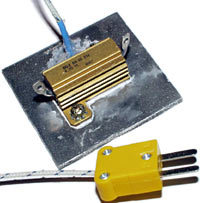

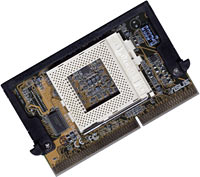
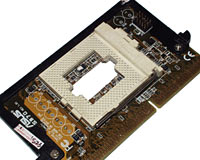
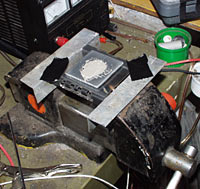


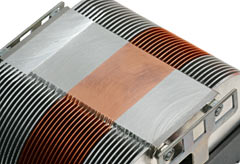
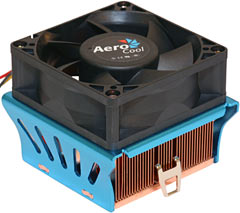
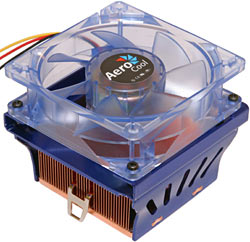
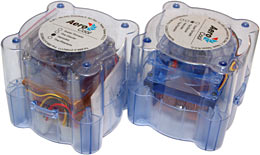

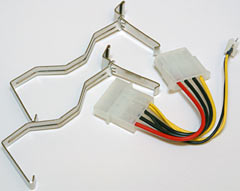
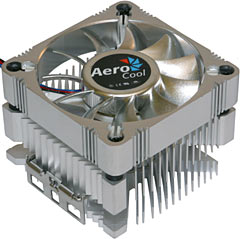
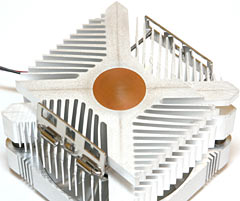
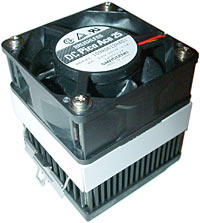
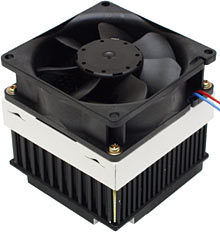

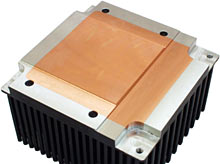
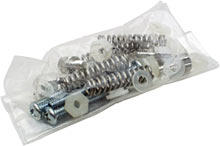
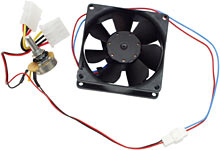
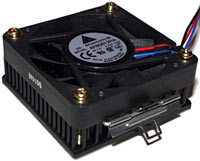

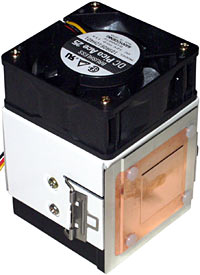
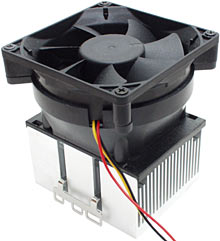
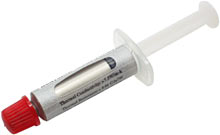

































































































































![[SecureWebs]](images/sw.gif)